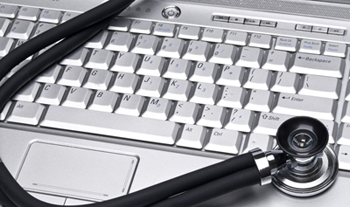Emerging trends in the healthcare facilities are Internet of Things, data analytics, artificial intelligence and machine learning.The growth will continue to increase,as the latest technology is vital for advancement. Now, many healthcare organizations are leveraging Software as a Service (SaaS) for key applications. The digital or analog record, detailing a medical treatment or clinical test is the physician’s clinical documentation. Recording patient details in the form of medical reports for future referral has now become a part of the technological advancement. Medical transcription companies can provide documented medical reports for physicians.

Benefits of the Electronic Medical Record
EMRs provide easier access to accurate clinical data and up-to-date information about patients for more coordinated and efficient care. It has the ability to establish and maintain effective clinical workflows. There will be fewer medical errors, improved patient safety, and stronger support for clinical decision-making.The ability to quickly transfer patient data from one department to another will be easier. Operational costs in transcription services will be low. Also, you are ensured an uncompromised legal document.
Types of Medical Transcription Dictation
Physicians can dictate a medical report in three different ways. This includes telephone dictation, PC-based dictation, and mobile dictation.
- When using a telephone to dictate, the telephone’s keypad is used to control the recorder. This is an old technique used by them to dictate medical reports.
- In PC-based dictation, physicians dictate clinical data to any standard computer, which provides special dictation microphone and installed software. By integrating this computer to clinical EMR systems, you can save time and maintain accuracy.
- Dictation on-the-go is a necessity for many healthcare providers. Physicians then started dictating patient reports through digital portable recording devices and smartphones, which support quality voice recording.
Guide to Physicians When Doing a Dictation
Documentation is the essential ingredient of good medical care. Install good dictation software and use a quality recorder for clear communication. Gather all patient information and organize data before dictating. When dictating in an EMR setting, physicians should follow certain guidelines for quality dictation. Provide patient demographics with more than one patient identifier to get the best service done,e.g. birth date, MRN, or account number. It is mandatory to dictate the date of service for every report. Physically pause the recorder when yawning or coughing while doing a dictation; also avoid eating or chewing gum. When engaging in other conversations, pause the recording when in the middle of a dictation. Avoid extraneous background noise areas while recording. Also avoid crowded places for better voice quality. Clarify words and numbers that may sound the same when dictated. Clarify uncommon abbreviations, use facility approved list. Avoid the risk caused by dangerous abbreviations that can mislead or have more than one definition by expanding them. Include units of measure when necessary and appropriate. When dictating lab tests and vital signs, the numbers should not ambiguously stand alone. Provide feedback and direction to medical transcription outsourcing division or transcription staff to improve data capture and to avoid repeated errors.
In order to maintain efficient workflow status, physicians should quickly complete consults by dictating directly into the EMR or letter templates and by minimizing transcription turnaround time.The main problems that can lower the dictation quality are rapid speech, poor articulation, insufficient volume, background noise, incorrect or insufficient patient information, and erroneous demographics. A high-quality documentation outcome starts with high-quality dictation.


